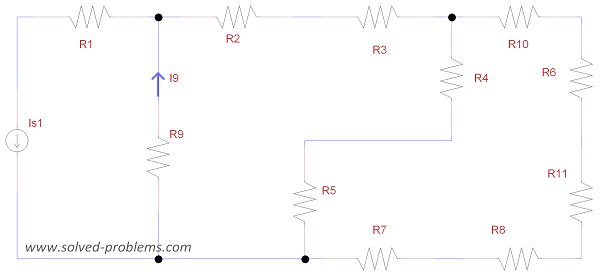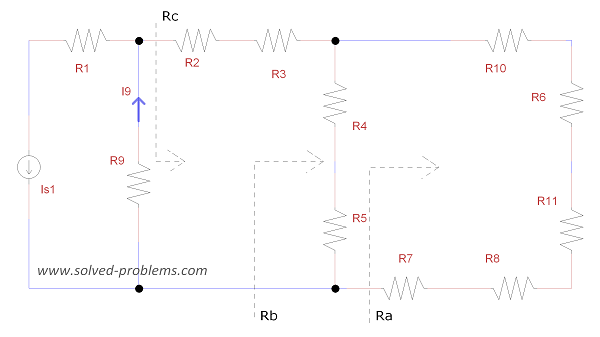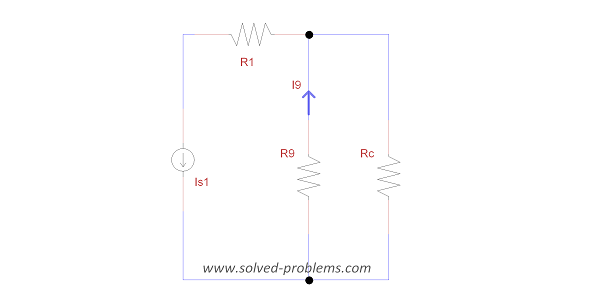Find ![]() (Hint: use circuit reduction).
(Hint: use circuit reduction).
All resistors are ![]() and
and ![]()

Solution
Let’s redraw the circuit:

The equivalent resistances are:![]()
![]()
![]()
Now, the circuit is reduced to:

Using current divider:
![]()
Find ![]() (Hint: use circuit reduction).
(Hint: use circuit reduction).
All resistors are ![]() and
and ![]()

Solution
Let’s redraw the circuit:

The equivalent resistances are:![]()
![]()
![]()
Now, the circuit is reduced to:

Using current divider:
![]()
In this case (r2+r3)//(r4+r5).. so why cant we apllly the current divider rule to this.???
please explain…
Those two branches are not in parallel. They would be parallel if R9 was a short circuit. So, if you replace R9 with a short circuit, Rnew=(R2+R3)||(R4+R5) with one node connected to the left node of R10 and the another one connected to the left of R7.
I can not find or download the node analysis book
Ix= RT/Rx+RT*I
For finding current across R9. We add R1+Rc for RT?
In Using current divider: of Problem 1-7: Circuit Reduction – Current Divider
Posted byYaz April 15, 2010
I9=Rc / R9+Rc × Is1 = 7.742A there is a typo the first Rc should be R9 as numerator.
Leave a Reply